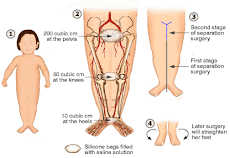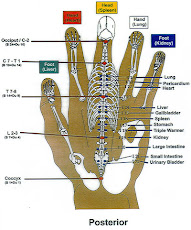Figs are a good source of potassium, a mineral that helps to control blood pressure.
Figs are a good source of dietary fiber. Fiber and fiber-rich foods may have a positive effect on weight management.
You probably do not think about the leaves of the fig tree as one of fig's edible parts. But in some cultures, fig leaves are a common part of the menu, and for good reason. The leaves of the fig have repeatedly been shown to have antidiabetic properties and can actually reduce the amount of insulin needed by persons with diabetes who require insulin injections. In one study, a liquid extract made from fig leaves was simply added to the breakfast of insulin-dependent diabetic subjects in order to produce this insulin-lowering effect.
In animal studies, fig leaves have been shown to lower levels of triglycerides (a form in which fats circulate in the bloodstream), while in in vitro studies, fig leaves inhibited the growth of certain types of cancer cells.
1. Figs have a laxative effect due to its large cellulose content and tough skin. The tiny seeds of the fruit stimulate peristaltic movements of the intestine. Owing to this, figs are an excellent remedy for 'piles'.
2. The active agent in fig is benzaldehyde, a compound that has proven effective in tests on human cancer patients.
3. Phlegmatic cases of cough and asthma are treated with figs. It gives comfort to the patients by draining of the phlegm.
4. Figs in combination with soya milk are wonderful in between meals as a weight builder.
5. Effective against high blood.
6. Prevents aging
7. Strengthens the cardio vascular system.
8. It fights many kinds of cancer.
9. It's a good anti oxidant
More Fibers ...
A. List of health problems ( and what to do !) click here.
Previous post,
.
Figs are a good source of dietary fiber. Fiber and fiber-rich foods may have a positive effect on weight management.

You probably do not think about the leaves of the fig tree as one of fig's edible parts. But in some cultures, fig leaves are a common part of the menu, and for good reason. The leaves of the fig have repeatedly been shown to have antidiabetic properties and can actually reduce the amount of insulin needed by persons with diabetes who require insulin injections. In one study, a liquid extract made from fig leaves was simply added to the breakfast of insulin-dependent diabetic subjects in order to produce this insulin-lowering effect.
In animal studies, fig leaves have been shown to lower levels of triglycerides (a form in which fats circulate in the bloodstream), while in in vitro studies, fig leaves inhibited the growth of certain types of cancer cells.
1. Figs have a laxative effect due to its large cellulose content and tough skin. The tiny seeds of the fruit stimulate peristaltic movements of the intestine. Owing to this, figs are an excellent remedy for 'piles'.
2. The active agent in fig is benzaldehyde, a compound that has proven effective in tests on human cancer patients.
3. Phlegmatic cases of cough and asthma are treated with figs. It gives comfort to the patients by draining of the phlegm.
4. Figs in combination with soya milk are wonderful in between meals as a weight builder.
5. Effective against high blood.
6. Prevents aging
7. Strengthens the cardio vascular system.
8. It fights many kinds of cancer.
9. It's a good anti oxidant
More Fibers ...
A. List of health problems ( and what to do !) click here.
AVOCADO
BEE STING VENOM,
BROCCOLI,
CANNABIS,
CELERY,
CHOCOLATE,
COCONUT,
CUCUMBER,
EGGS, EGG SHELLS
FIGS,
FRUIT- (JUICES),
GARLIC,
HAWTHORN BERRIES,
HONEY,
HOT PEPPERS(Cayenne),
KIWI,
KURKUMA/TURMERIC
LIGHT,
LEAN MEAT,
MANGO,
MARIJUANA,
MILK
OLIVE OIL,
ONIONS,
TOMATOES,
~~OTHER HEALTH TIPS~~
CANCER . the right food..
EAT and LOSE weight,
WATER, hot/cold water and Heart attack,
CVA - STROKE ? ... Sing !!.....!!
HERNIA, Nucleus Pulposus,HNP,
MIGRAINE,
GASTRIC ACID (heartburn),
Hyper Baric Oxygen Therapy, HBOT,
TOOTH ACHE ,
ACNE/PIMPLES ,
LARGE INTESTINE BACTERIA
QUIT SMOKING,
SODA DRINKS , what happens inside your body?
WORK-OUT, Create your own gym,
BEE STING VENOM,
BROCCOLI,
CANNABIS,
CELERY,
CHOCOLATE,
COCONUT,
CUCUMBER,
EGGS, EGG SHELLS
FIGS,
FRUIT- (JUICES),
GARLIC,
HAWTHORN BERRIES,
HONEY,
HOT PEPPERS(Cayenne),
KIWI,
KURKUMA/TURMERIC
LIGHT,
LEAN MEAT,
MANGO,
MARIJUANA,
MILK
OLIVE OIL,
ONIONS,
TOMATOES,
~~OTHER HEALTH TIPS~~
CANCER . the right food..
EAT and LOSE weight,
WATER, hot/cold water and Heart attack,
CVA - STROKE ? ... Sing !!.....!!
HERNIA, Nucleus Pulposus,HNP,
MIGRAINE,
GASTRIC ACID (heartburn),
Hyper Baric Oxygen Therapy, HBOT,
TOOTH ACHE ,
ACNE/PIMPLES ,
LARGE INTESTINE BACTERIA
QUIT SMOKING,
SODA DRINKS , what happens inside your body?
WORK-OUT, Create your own gym,
Previous post,
.






















